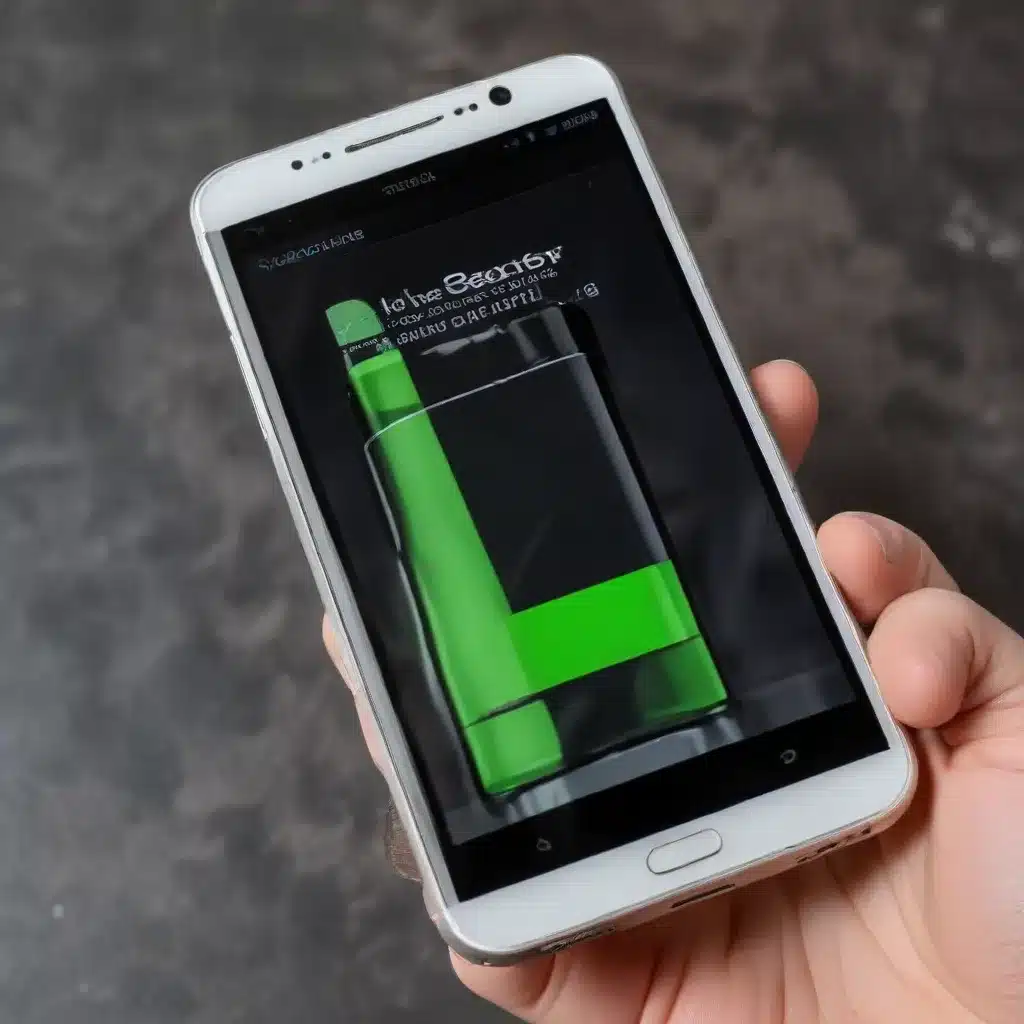
Understanding Battery Basics
As an experienced IT professional, I understand the frustration of a dwindling smartphone battery. Whether you’re out and about or relying on your device for work, a short battery life can be a major inconvenience. Fortunately, there are several proven strategies to extend your smartphone’s battery lifespan and get the most out of each charge.
To start, let’s cover a few fundamental battery concepts. “Battery life” refers to the amount of time your device runs before needing a recharge, while “battery lifespan” is the duration your battery lasts before it needs replacement. Maximizing both is key to an optimal smartphone experience.
Adjusting Screen and Network Settings
One of the simplest ways to preserve battery life is by managing your screen brightness and network connections. Dimming your screen or enabling auto-brightness can significantly extend runtime. Similarly, keeping Wi-Fi turned on will use less power than cellular data.
On iOS devices, the Low Power Mode feature introduced in iOS 9 is a handy way to prolong battery life when it starts to run low. This mode reduces display brightness, optimizes device performance, and disables background activity, all while allowing you to still make calls, send messages, and access the internet. Apple Watch users can also take advantage of Low Power Mode on watchOS 9.
Android users will find similar battery-saving tools, often under “Battery” or “Power” settings. Enabling these modes can disable background processes, limit CPU performance, and restrict network connectivity to prioritize longevity over raw speed.
Managing App Usage and Charging Habits
Beyond display and network settings, how you use your apps and charge your device can have a big impact on battery health. Avoid the common myth of “killing” apps from the recent apps menu – modern smartphones handle app management efficiently, and force-quitting can actually drain more power.
Additionally, it’s best to avoid charging your device while gaming or performing other intensive tasks. This “parasitic load” can generate excess heat, which is detrimental to battery longevity. Instead, let your phone charge fully before unplugging.
Experts recommend keeping your battery level between 20-80% as much as possible. Completely draining to 0% and then charging to 100% repeatedly can accelerate capacity loss over time. Partial charging cycles are gentler on lithium-ion batteries.
Monitoring Temperature and Avoiding Extremes
Temperature is a critical factor in battery health. Exposing your device to high heat, whether from direct sunlight, a hot car dashboard, or even wireless charging, can permanently degrade battery capacity. Aim to keep your smartphone within the recommended 32-95°F (0-35°C) operating range.
For long-term storage, it’s best to store your device at 40-50% charge and in a cool, dry place. Avoid leaving it at 100% or completely drained, as either extreme can harm the battery over time.
Incorporating Power-Saving Features
Modern smartphones offer a range of built-in power-saving features that are worth exploring. On Android, you can consider disabling less essential Google services like the assistant or system intelligence if you don’t use them regularly. Many Android devices also have specialized battery saver modes that can restrict background activity and connectivity.
iOS users can take advantage of the Battery section in Settings to see which apps are consuming the most power and make adjustments accordingly. Turning off unnecessary location services, push notifications, and background app refreshes can all contribute to better battery life.
Maximizing Battery Lifespan Through Proper Charging
One of the most important considerations for extending your smartphone’s battery lifespan is how you charge it. Avoid the common habit of leaving your device plugged in overnight or charging it to 100% repeatedly. This can lead to increased voltage stress and accelerated capacity loss.
Instead, aim to charge your phone in shorter, partial bursts throughout the day, keeping the battery level between 30-80%. Unplug it once it reaches a comfortable level, rather than leaving it on the charger indefinitely. Additionally, be mindful of using fast charging, which can generate excess heat. Limit fast charging to short top-ups when needed, and use slower, temperature-aware charging methods for longer sessions.
Calibrating and Maintaining Battery Health
Periodically calibrating your smartphone’s battery can help ensure the reported battery percentage accurately reflects the remaining charge. To do this, charge your device to 100%, let it sit for a few hours, then fully drain it until the phone turns off. Repeat this cycle once, and the battery readings should be more reliable going forward.
Remember, while these tips can help maximize your smartphone’s battery life and longevity, lithium-ion batteries will naturally degrade over time. With proper care and maintenance, however, you can extend the usable lifespan of your device’s power source and enjoy longer-lasting performance.
For more information on IT solutions, computer repair, and technology insights, be sure to visit https://itfix.org.uk/. Our team of experienced professionals is dedicated to helping you get the most out of your devices and stay ahead of the curve.
Conclusion
Maintaining a healthy smartphone battery requires a combination of adjusting settings, managing usage, and adopting proper charging habits. By following the strategies outlined in this article – from managing screen brightness and network connections to monitoring temperature and calibrating the battery – you can maximize the runtime and longevity of your device’s power source.
Remember, every smartphone and user is different, so experiment with these tips to find the right balance that works for your needs. With a little care and attention, you can keep your smartphone’s battery performing at its best for years to come.












